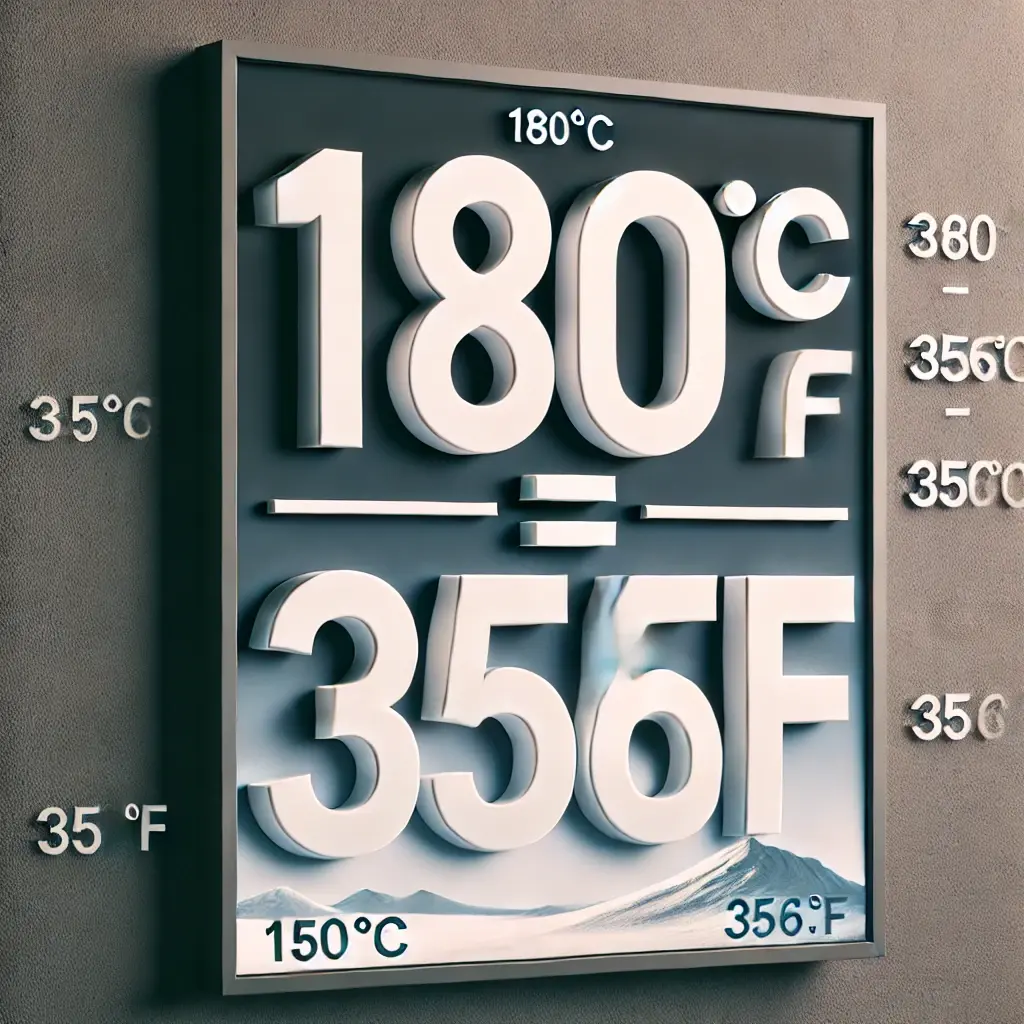Temperature conversion between Celsius and Fahrenheit is a fundamental concept that plays a critical role in various domains, from science to everyday life. 180 c to f is a simple process, but understanding the method behind it can be invaluable, especially for those working in fields where precision is crucial. In this article, we will explore the 180 c to f in detail, explain the underlying formula, and provide practical examples to illustrate the conversion process.
The Importance of Temperature Conversion
Temperature is a measure of heat, and its accurate conversion between different scales is essential for a variety of tasks. Whether you’re cooking, conducting scientific experiments, or working in an industry that requires precise temperature control, understanding how to convert between Celsius and Fahrenheit is indispensable.
The Formula for Converting Celsius to Fahrenheit
The formula to convert Celsius to Fahrenheit is straightforward:
F = (C × 9/5) + 32
Where:
- F is the temperature in Fahrenheit
- C is the temperature in Celsius
This formula is derived from the linear relationship between the Celsius and Fahrenheit scales. In essence, the Celsius scale is based on the freezing and boiling points of water, while the Fahrenheit scale is a bit more arbitrary, originally designed to divide the freezing and boiling points of water into a broader range of values.
Step-by-Step Conversion: 180°C to Fahrenheit
Now, let’s apply this formula to convert 180°C to Fahrenheit.
- Multiply the Celsius temperature by 9/5:180°C×95=324180°C \times \frac{9}{5} = 324180°C×59=324
- Add 32 to the result:324+32=356°F324 + 32 = 356°F324+32=356°F
Thus, 180°C is equivalent to 356°F.
Practical Applications of 180°C to Fahrenheit Conversion
Understanding this conversion is particularly useful in several practical scenarios:
Cooking and Baking
In the culinary world, temperature precision is vital. Many recipes, especially those originating from Europe or other parts of the world that use the metric system, list temperatures in Celsius. Converting these temperatures to Fahrenheit allows for the successful replication of these recipes in countries like the United States, where Fahrenheit is the standard iphone:tclfmvpaayk= cute wallpapers
For example, when baking a cake or roasting meat, setting your oven to the right temperature ensures the food is cooked evenly and thoroughly. 180°C is a common baking temperature, often used for cakes, cookies, and casseroles, and knowing that it equates to 356°F is key for culinary success.
Scientific Experiments
In scientific experiments, temperature control can influence the outcome significantly. Scientists often work with Celsius as their standard unit, but when collaborating with international peers or translating data for broader audiences, converting temperatures to Fahrenheit becomes necessary.
For instance, an experiment that requires precise temperature regulation at 180°C would need to be accurately converted to 356°F if conducted in a region where Fahrenheit is the standard.
Industrial Applications
In various industries, such as manufacturing and chemical processing, temperature conversion is critical. Machines, processes, and reactions often require specific temperatures to function correctly. Knowing how to convert 180°C to Fahrenheit helps ensure that operations run smoothly, preventing accidents and ensuring product quality.
Why Accuracy in Temperature Conversion Matters
While the formula for converting 180 c to f might seem simple, accuracy in these conversions is paramount. A slight miscalculation can lead to significant consequences, particularly in fields where precision is non-negotiable. Whether it’s ensuring the safety of a chemical process or the success of a recipe, understanding the exact conversion and its implications can make all the difference.
Common Mistakes in Temperature Conversion
Despite the simplicity of the formula, mistakes can still happen. Common errors include:
- Forgetting to add the 32: This is a crucial step that shifts the scale correctly from 180 c to f.
- Rounding errors: While it’s sometimes necessary to round the final number, excessive rounding can lead to inaccuracies. For scientific and industrial purposes, it’s often best to keep the conversion as precise as possible.
- Misinterpreting the formula: Some might mistakenly multiply by 5/9 instead of 9/5, leading to incorrect results.
Quick Reference for Common Conversions
Here’s a quick reference for some common 180 c to f conversions:
- 100°C = 212°F (boiling point of water)
- 0°C = 32°F (freezing point of water)
- 37°C = 98.6°F (average human body temperature)
- 180°C = 356°F (common baking temperature)
Conclusion
Accurate temperature conversion is a skill that finds relevance in everyday life as well as professional settings. Whether you’re following a recipe, conducting an experiment, or managing industrial processes, understanding how to convert 180 c to f is essential. By following the straightforward formula and keeping common pitfalls in mind, you can ensure that your conversions are precise and reliable.




